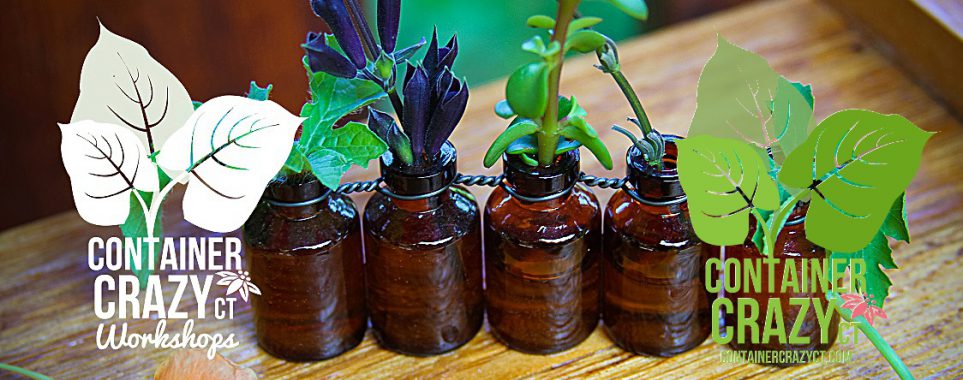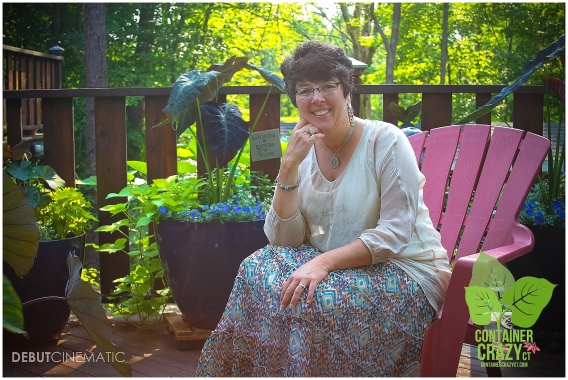A New Year is coming up in just a few days, and what is in store for 2024? It is hard to tell. Things are changing for me. My husband has retired. It feels surreal! It is amazing, and it is an adjustment. New days are coming.
We now feel we will have time to do some gardening together for a change. While he has always been the most enthusiastic helper to my plant endeavors over the years, even learning some of the plant’s Latin names, we could not actually physically build a garden together at our home because he was always so busy with work.
I always fill our long deck along the back of our ranch style home with container gardens filled with plants of all kinds and some vegetables over the years. Tomato plants and hot pepper plants are two of our fav’s. But we have done others like Edamame and pumpkins, just to name two! And of course, many big planters filled with wonderful tropical plants like Ensete, Colocasias, and Canna Lilies.
Steve, my husband, always helped me with the heaving lifting of bringing up pots with a hand-truck to our deck, but sometimes, I was on my own and that is probably how I strained some muscles here and there. We are both getting older and need to be careful with that.
We always dreamed of having a large, raised bed type of garden system in our backyard. One where there are several raised beds in a pattern to walk through, with a fence and arbor entrance. However, one of our big dilemmas is the wild animals! There are plenty in our yard from groundhogs to squirrels. In fact, I usually allow the groundhogs to keep their home under a shed and have babies which are cute to watch scurry across the backyard when they see or hear us at the house or on the deck, but now, how will we ever keep them away if we build our dream vegetable garden in our backyard?
Wild animals have become one of the biggest challenges to gardeners. Some people will put gardens in the front yard or lawns, closer to the street, and that may help keep pests away. However, our front yard is a big hill so that wouldn’t work. Plus, there is no water access up on our front hill.
Sometimes I think we will take down our pool now. It is more costly to maintain. The bucket of chlorine tabs of supplies went up so much in price that we don’t think it will be worth it. The pool filter always breaks, and we are not home in the summers all the time, so we can’t watch the filter basket – stuff like that. Could that area be our new garden space if we did remove our pool? Not sure. Even if it was, it would have to be foolproof to protect from the pests.
That is just one of our goals. I always also grew tomato plants from seed, and it is a wonderful experience. I don’t see the hubby tending to those, but maybe we could grow the plants in our greenhouse till fruit time, but a greenhouse can get very very hot in the summer, maybe too hot to set fruit. Fans and screens need to be maintained, and I suspect insects would be a bigger problem in the greenhouse rather than outdoors where there are more natural insect predators to help. So, I’m not sure on that idea. Maybe I will test it out this year for the first time though. Maybe with smaller tomato plants, like some cherry tomatoes because inside the greenhouse, groundhogs and squirrels can’t enter.
One friend suggested just using the community garden space in our town for a garden, but I would really like to tend to a garden at my home and be able to enjoy it daily. Our backyard is totally surrounded by woods and the river runs down in the back which brings along many types of wild animals. Deer is another. And we all know here in CT how deer love to eat plants. It is like I need a fortress.
We also have lots of home improvement ideas brewing in our minds but which to do first will be the big question. I’m sure we will make a list and decide from there.
Also, I’m kind of semi-retiring myself. I am no longer offering my container garden services and have closed down my business officially via paperwork, but I will always still dabble in plant fun. The other big question is, do I keep my plant blog going?
Can you believe, I’ve written on this blog, Container Crazy CT, for over 15 years? I do have quite a few visitors per my stats, and I added ads this year only because I need helping with maintaining it. For many years, I never put ads on here. I just freely wrote articles to share.
I wonder how much I would miss my blog if I stopped it all together? I have even looked up things on my own blog before to remind me on what I did for this or that. I don’t get many “likes” on this blog on the actual posts – I think it is because people need to log in to do so, and today, clicking likes and heart is so easy for every other platform from Instagram to Facebook, so I think my blog is a bit old fashioned in comparison. It is not so easy to just click like.
When spring arrives, I will have to decide what my new adventures may be. I have often dreamed of getting a pottery wheel and doing pottery in my greenhouse as a new gig. But the expense of a kiln may be too much. Someone told me the other day you can bring pottery to be fired elsewhere – I’ll have to research that. That was always one of my dreams to make my own pottery items.
But the ultimate dream would be to just move to Hawaii. Yup, that kidding husband of mine jokes – Let’s do it – knowing full well he probably would NEVER agree to that! And yes, Hawaii is way too expensive! But dreaming is a good thing – we all should dream – one never knows.
Welp, if you feel like commenting on your thoughts – let me know. Just a week ago, my cousin’s son told me he was researching plant stuff and came across one of my articles from this plant blog. I thought, oh gosh, I hope it was a good article because he is super smart and a talented professional horticulturist himself. What was he looking up? How do deal with squirrels in the garden! Go Figure.
Happy New Year’s to You all. I hope you have some new goals in mind for 2024 too – even if they are unclear like mine.
Cheers!
Cathy Testa
Container Crazy CT
Broad Brook, CT
































































